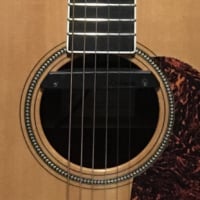Welcome! Here are the website rules, as well as some tips for using this forum.
Need to contact us? Visit https://heatinghelp.com/contact-us/.
Click here to Find a Contractor in your area.
If our community has helped you, please consider making a contribution to support this website. Thanks!
Energy Efficient Circulators
Options
van_5
Member Posts: 6
A typical Taco 007 uses about 75 watts of electricity. With system pumps and low temp radiant zones in nearly constant circulation, this adds up quickly. Does anyone make a much more energy efficient circ that could replace the 007?
0
Comments
-
efficiency
Correct sizing is the biggest factor in pump efficiency. If a 007 is oversized, use a smaller pump and save the electricity. There is really no way around the amount of energy it takes to provide the flow you need. All brands I know of have similar electricity usage for similar pump curves.
-Andrew0 -
zone valves
are another option. Typically a single circ like that can move 100,000 btu or more. Zone valves use a lot less power than a wall full of 75watt circs running at 20% efficiencies. Divide the amount of BTU's moved by the power consumption and oversized circs look pretty bad, often dropping below 20% wire to water efficiencies.
Wilo is about to un-veil a 1 watt, 1 gpm mini circ for zone applications!
hot rod
To Learn More About This Professional, Click Here to Visit Their Ad in "Find A Professional"0 -
Armstrong e-series
These have much better efficiencies than wet-rotor designs, but they are probably higher flow than you need. I am considering them for my geo system - when you're moving that much water, the pumping power becomes significant.
http://www.armstrongpumps.com/Data/otherinfos/Links/01_05_008/E Series White Paper.pdf0 -
slightly more then a 25 watt light bulb
How did you determine 75 watts? The 007 has a 1/25 hp motor. The conversion from from hp to watts multiply by 746.0, 1/25x746.0=29.84 bhp watts/.4eff=74.6 watts Thats not bad because the pump does not run that often, compared to a higher cost pump.Joe Mattiello
N. E. Regional Manger, Commercial Products
Taco Comfort Solutions0 -
so if my math is right that's 14¢ a 24-hr day constant circ
30watts x 24 hrs = 720 watts. In westchester total cost of electric including adjustments, delivery, taxes = 19¢ KW. .72KW = 14¢. Per month about $4.20 each circ
Still if you can use one circ with TRVs you'd be ahead of the game. But different temp zones makes that hard to do.0 -
Wilo...
is supposed to getting to our shores a varispeed circ. based on delta P... runs on just a couple of watts at low loads. Would be great if we could actually get it once.... something about gov. approvals or UL listing.... go figure.
Floyd0 -
Hey Joe
The 007 is rated at 0.7 amps. So 0.7A x 115V = a lot more than 29.84W. ;-)0 -
Power Factor
You are forgetting the power factor which optimistically can be a 0.85 or 0.90 divisor. In smaller circulators this can be a smaller (less efficient) number, in the 0.70's on occasion.
Also the "1/25 HP" rating is really nominal if not bogus.
Grundfos and others use that across a number of their small circulator lines regardless of actual amperage which will vary in that range. They are all close within that range but generally are 1/25 as a minimum then go to 1/12, 1/6 and up.
They do this because they have to list some horsepower because some expect it expressed as such.
David and UniR have it right, Amps x volts = Watts in single-phase power and that is where it counts.0 -
one more
isn't the .7 amp under full or maxium capable load?
so in fairness I think you need to measure the current on the motors when thinking about actual cost of operation.0 -
Power Factor is important...
... as is the nominal power rating and the motor construction itself. There is a world of difference efficiency-wise between shaded pole, PSC, and permanent magnet motors, for example. Where a small shaded pole motor may be in the 20%'s (i.e. 80% of the energy goes to heat, not motion), a permanent-magnet motor with the same ability to do work might be 70-80% efficient.
Presumably, this is one of the reasons why the Grundfos alpha plus and other such drives are far ahead of their competition when it comes to real-life performance, i.e. the combination of an intelligent variable-speed drive with a high inherent motor efficiency. Such ΔP-sensing pumps combined with reliable zone valves could make microzoning very cost and energy efficient.0 -
Rated for NEC purposes
for every motor has to have a wiring size basis and it tends to be the worst case. But you are correct, JP, the load (draw) will vary. My Grundfos runs about 60% of nameplate but when I open the balancing valve and let it run out, this increases. With no resistance (maximum flow) it runs out on it's curve toward maximum draw.
Still, as a nation, we do over-pump. We just crossed the 300 million population mark so the nation at least is pumping away. 0
0
This discussion has been closed.
Categories
- All Categories
- 87.3K THE MAIN WALL
- 3.2K A-C, Heat Pumps & Refrigeration
- 61 Biomass
- 429 Carbon Monoxide Awareness
- 120 Chimneys & Flues
- 2.1K Domestic Hot Water
- 5.8K Gas Heating
- 114 Geothermal
- 166 Indoor-Air Quality
- 3.7K Oil Heating
- 77 Pipe Deterioration
- 1K Plumbing
- 6.5K Radiant Heating
- 395 Solar
- 15.7K Strictly Steam
- 3.4K Thermostats and Controls
- 56 Water Quality
- 51 Industry Classes
- 50 Job Opportunities
- 18 Recall Announcements

